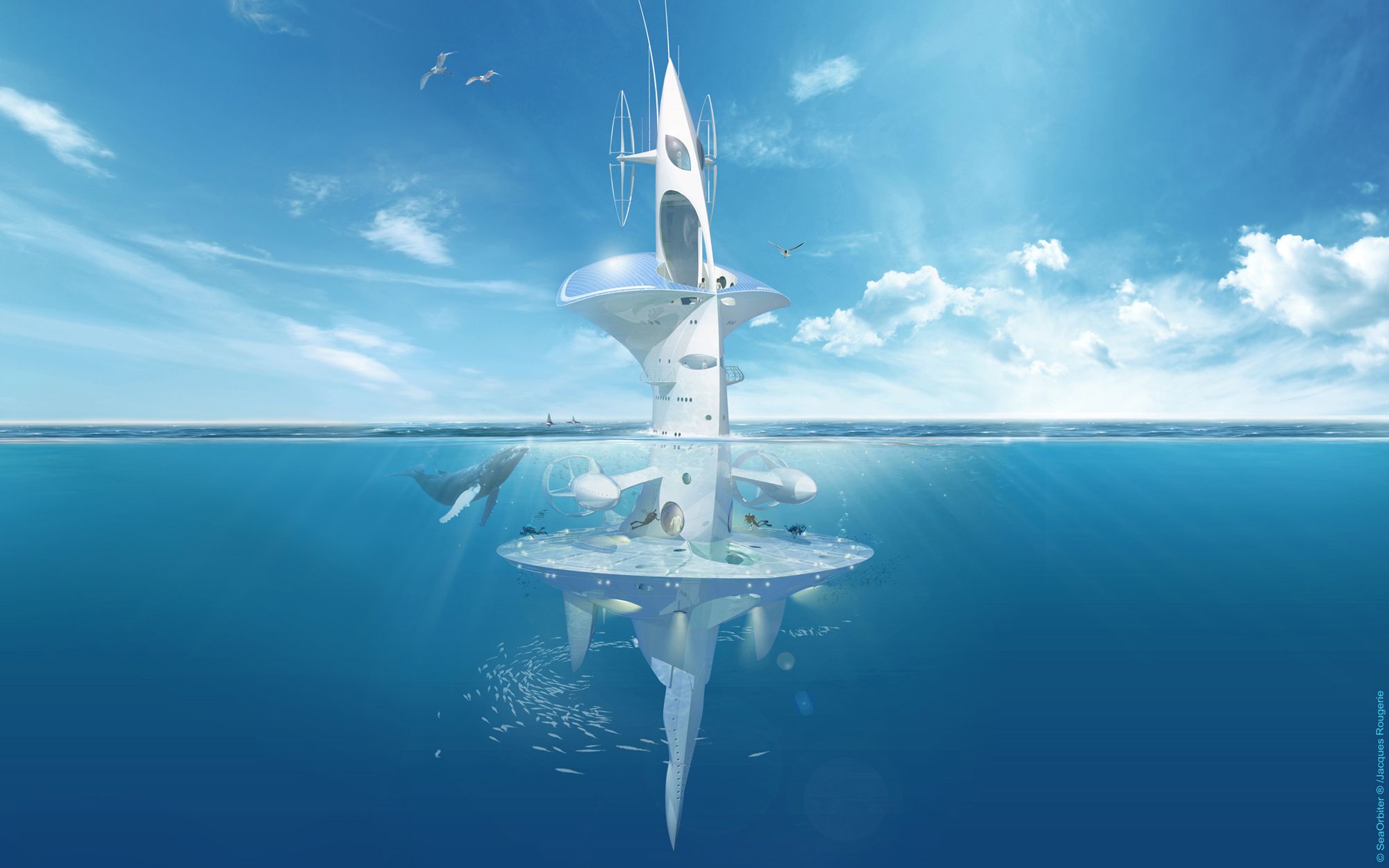
In 1977, architect Jacques Rougerie built the Galathée, his first underwater habitat design. The semi-mobile laboratory was able to be moored as deep as 196 feet with little environmental impact. Since then, Rougerie has developed other marine structures for mostly scientific purposes, but his newest project blows them all out of the water. Created to advance sea exploration SeaOrbiter is a vertical vessel that is part ship and part submarine.

The result of over 30 years of research, the €50 million ($55M) SeaOrbiter is designed to be a science platform that enables 24/7 exploration of the sea, which is still around 90 percent unexplored. The huge design, made using Sealium (a recyclable aluminum designed for marine use), floats with 190 feet rising above water level and 100 feet submerged below. By harvesting wind, wave and solar power, the research ship is able to generate its own electricity. Also a space simulator, the pressurized environment inside the craft can accommodate a crew of 18-22b for prolonged missions, where they will live in symbiosis with marine life.

According to its official website, SeaOrbiter can deploy devices and water vehicles for exploration as deep as 19,685 feet, while the onboard laboratory has everything needed for “continuously analyzing physical, chemical and dynamic environmental parameters" in real time. The communications systems will also enable the team to send their findings straight to the public.

The project has a pretty big list of supporters, including NASA, National Geographic, Rolex and DCNS. SeaOrbiter is about 40 percent funded so far, with a past crowdfunding campaign making a big dent by earning $378,466 for the vessel’s “Eye” where the communication systems will be. Now that the Eye has been built, it’s time for the rest of the SeaOrbiter to follow suite, so it’s time to open your checkbook if you want in on a piece of scientific history.











